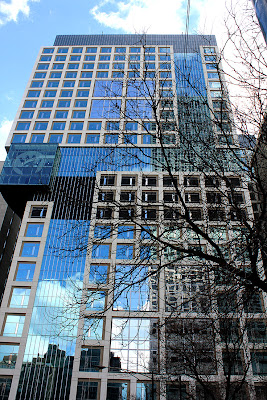click images for larger view
The above post has two events for today, Thursday, August 2nd. The most important thing happening today, however, is what's
not happening.
At 12:45 p.m. at City Hall, the agenda of this month's meeting on the Commission on Chicago Landmarks is once again uncontaminated by any acknowledgement of the grave threat to Bertrand Goldberg's Prentice Hospital.
Last week the
Save Prentice Coalition released a open letter to Mayor Rahm Emanuel signed by an international roster of 60 of the world's most
accomplished architects and academics, from Frank Gehry to Jeanne Gang, Tod Williams and Billie Tsien, to Dan Wheeler to Dirk Lohan, Ron Krueck and Mark Sexton, to John Ronan, to Donna Robertson and Bob Somol, and more, with signatories from Chicago, to Berlin, to Shanghai. The letter bears a simple message:
Bertrand Goldberg's Prentice Hospital is a building of international importance and it deserves landmark protection to keep Northwestern from
its intention of smashing the structure into rubble for still another vacant lot
on its sprawling Streeterville campus.
Over a year ago, the Landmarks Commission listed the landmarking of Prentice as a item on its June, 2011 agenda. On the morning of the meeting, after a who's-who of forces rallied in support of the action, Prentice was
removed from the agenda at the request of Northwestern, for what a university spokesman referred to as "further discussion with the city."
The rest is silence.
In fact, the only non-silent party in the Prentice controversy is Northwestern.
Although it has, for four years, left a full block to the south of Prentice a
gravel filled empty lot since
Lakeside Veterans Hospital was demolished, it has been consistent in its public statements that it
intends to destroy Prentice Hospital, no matter what. As a hospital
and as a university, Northwestern is one of Chicago's greatest
institutions. As custodian of one of the largest tracts of land in
Streeterville, it is a chronic enabler of architectural mediocrity. The
architecture of the Northwestern Hospital campus veers towards the bland, faceless and
dispiriting. It is not surprising they would want to destroy
Goldberg's Prentice. It will lower the curve.
No, it's only those who we would expect to represent the rest of us who are silent.
The Commission on Chicago Landmarks is silent.
42nd ward alderman Brendan Reilly, who engineered a
60-day demolition moratorium for Prentice in April of 2011, is silent.
Mayor Rahm Emanuel is silent.
The City of Chicago, its departments, and its commissions are not private clubs. The public has the right to know: What exactly is being talked about in those "further discussion"(s)? Over these intervening 14 months, how many discussions have taken place? Have there actually been any?
Or is the strategy to simply ignore Prentice, hoping those pushing to save it will simply tire and disappear, so the bulldozers can be brought in the Meigs Field way, and Prentice Hospital maimed beyond saving when no one is looking? Or will it be done the Michael Reese Hospital way? An empty promise to save the original 1907 Schmidt, Garden building while failing to do anything to secure the building from weather or vandals, followed by the city's nearly drowning in its own crocodile tears as it announced the structure had deteriorated so gravely that there was now no alternative to demolition.
If, indeed, Northwestern's strategy was just to wait out the exhaustion of its opponents, it seems a losing bet. Last week's letter from 60 architects was accompanied by a strong
editorial in the Sun-Times in support of preserving Prentice, and an op-ed piece,
Save Prentice from the wrecking ball, by AIA Chicago's Zurich Esposito and Landmarks Illinois' Bonnie McDonald, eloquently refuting the Trib's
previous endorsement of destroying the building. Landmarks Illinois has issued a compelling
re-use study for the building.
The
Save Prentice Coalition isn't tiring out; it's getting smarter and more savvy. Support for saving Prentice is gaining momentum, and spreading globally. Mr. Reilly, it's time to tell us where you stand. Mr. Mayor, it's time to end the official
omerta over Prentice. The public has a right to know what has been going in those closed-door discussions. And we need to know your vision for the city's future: Still another vacant lot? Or saving one of Chicago's most significant and distinctive buildings for future generations?
















